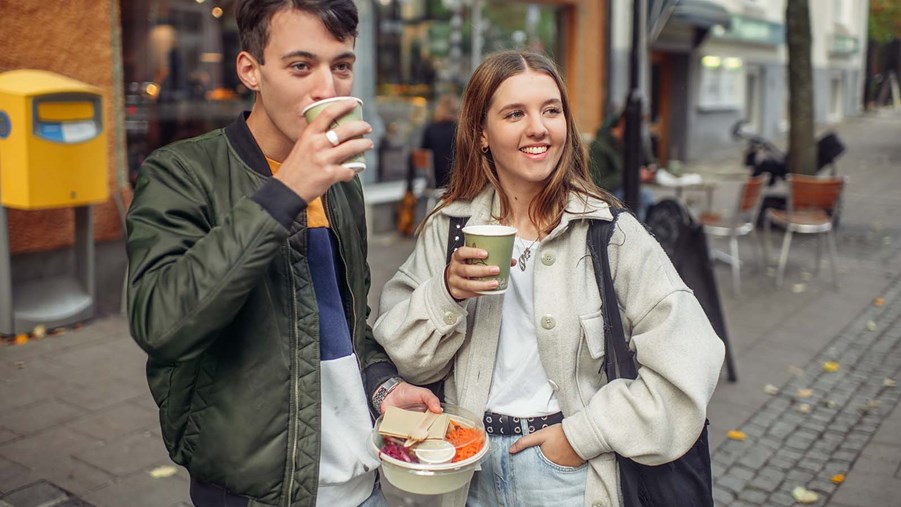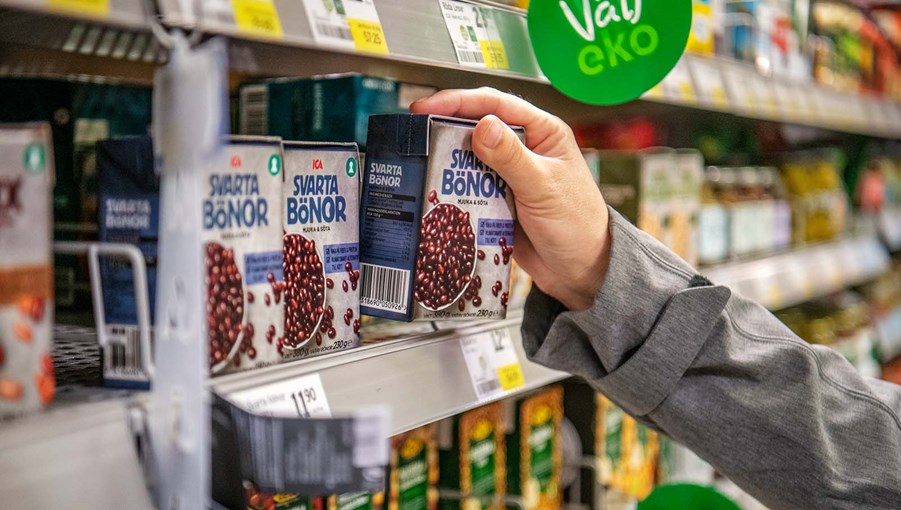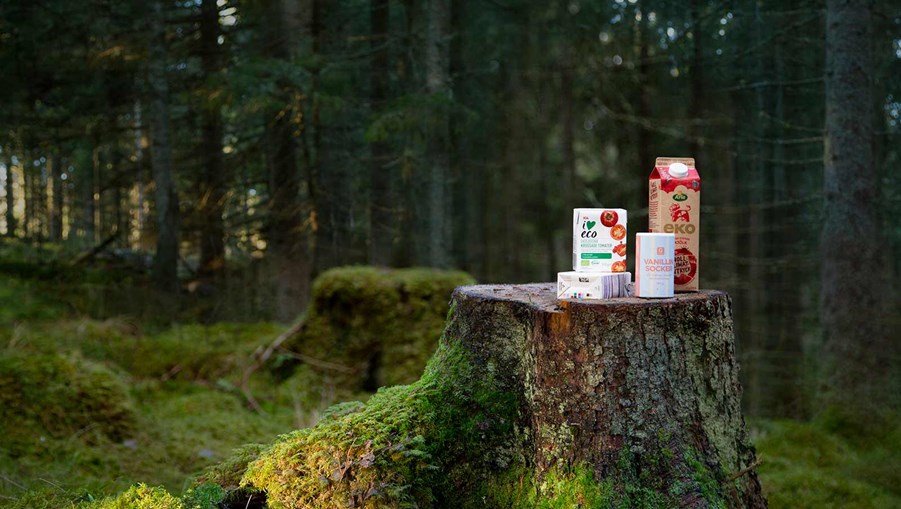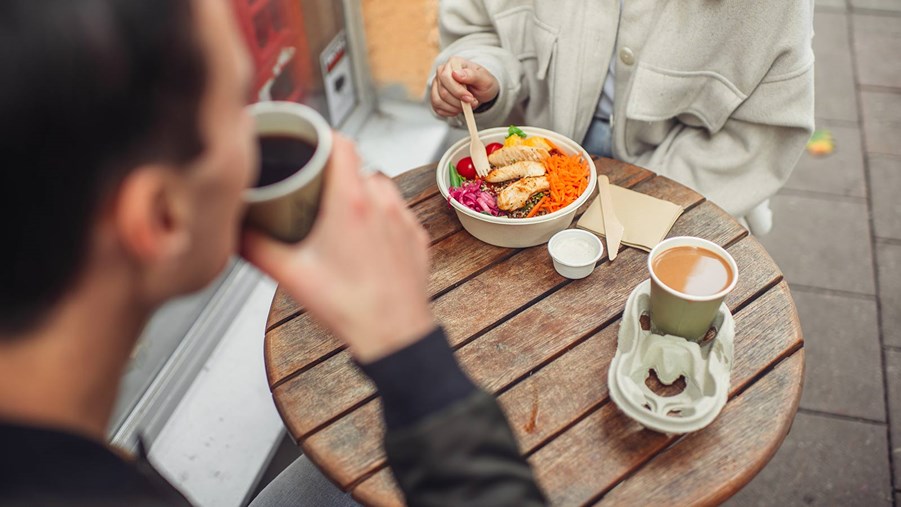
For the circular society to become a reality, fossil raw materials must be phased out – and more products must be recyclable many times over. This places new demands on both producers and legislators.
Renewable products are part of a circular ecocycle. One step in the green transition is to increase their use, while at the same time reducing the proportion of products made from fossil materials.
The EU is currently working on sweeping legislative changes. As far as the forest industry can see, the packaging and construction industries will be most affected. So what will it take to meet the greater demand for circularity?
“The short answer is: a completely different form of collaboration than we have today,” says Josefina Sallén, focus area manager for circular transition at RISE Research Institutes of Sweden, who has also worked on transition issues within the construction and chemicals industries.
“Neither customers nor suppliers can do this on their own. The linear and the circular approach are based on completely different types of business logic,” she continues.
Josefina Sallén’s view is seconded by Jon Haag, Chief Circular Officer for the new Swedish recycling company &Repeat, who is looking to resolve the sustainability challenge of disposable packaging in the restaurant industry.
“In a linear economy, you can solve one problem at a time. In a circular economy, you’ll need to tackle five, six, seven problems all at once. It’s going to be fragmented and very disruptive for consumers if each company or brand works out its own solution,” he says.
A circular value chain – how recycling could work
Milk cartons are an example of common packaging that comprises several different materials. The majority of the milk carton is paper, but the inside is lined with a barrier, often made of plastic. When the milk carton is recycled, the plastic has to be separated from the paper. The paper fibres are turned into pulp again, and then into new paperboard. The plastic is converted into energy, which runs the paper mill.
Consumers need support
Whether it be packaging or construction, the industry has a crucial responsibility to make life easier for the consumer. We cannot expect consumers to do the right thing automatically, according to Josefina Sallén.
“It needs to be simple, practical and beneficial for everyday life. And the responsibility for making that happen lies with suppliers and retailers,” she states.
Jon Haag believes that a deposit return scheme for more products may be one way to make advances. A deposit on takeaway packaging is an idea being floated at his company.
“Deposits are a way of teaching consumers a particular behaviour,” he says, citing the history of the glass bottle in Sweden as an example.
“We used to have a deposit on them. We don’t any more, but the level of glass recycling remains high. We’re continuing to be diligent,” says Jon Haag.
Today’s facilities for recycling are often more developed on the packaging front compared with the construction sector, for example. The recycling rate for paper packaging within the EU is a good 82.3 percent – but there is still much to be done in many areas, according to Josefina Sallén and Jon Haag.
“The level of recycling needs to increase, otherwise it doesn’t matter how good the consumers are at returns. I think we need more actors who collect and do something new with renewable materials,” says Jon Haag.
Product design for circularity
Swedish spread Bregott got a new packaging, which was launched last year, is an example of packaging that has been designed for ease of recycling. The plastic used is fully recyclable and the paper, which is also FSC-labelled, can easily be separated from the plastic. Compared with the previous tub, this new iteration has a 30 percent smaller climate footprint – and it is easier for consumers to sort correctly in their recycling. An important factor highlighted by both Jon Haag and Josefina Sallén is the need for a product to be designed for recycling right from the start.
“From the first moments of the design process, you have to choose one or more eco-friendly raw materials that are easily separable. The product must be simple to both use and recycle,” says Jon Haag.
When we talk about circular economy, we are talking about four aspects: durability, utilization rate, recycling and regeneration, says Josefina Sallén.
On the construction front, the service life of many products also needs to be reviewed.
“If it’s possible to use a renewable material, it’s important that the product itself can be used at least as long as it takes for the material to be regenerated,” she asserts.
Concrete suggestions for greater circularity
Jon Haag and Josefina Sallén agree that the price of fresh, newly produced material is a key factor. In their view, low material costs are doing nothing to promote circularity.
“If materials are too cheap, that creates problems,” says Josefina Sallén.
But could laws and regulations promoting increased recycling create problems for producers of paper packaging?
Jon Haag points out that costs in the form of higher producer responsibility charges might be a way to improve circularity via legislation. He takes plastic as an example:
“If you raised the producer responsibility charges for plastic by a factor of five, that would generate money for improved collection and recycling of that material, as well as creating new business opportunities.”
But the conditions for fibre-based materials look rather different. A paper fibre, for example, can be recycled within the ecocycle around 7 times, and more than 80 percent of all paper packaging within the EU is collected for material recovery.
Kai-Yee Thim works for the Swedish Forest Industries Federation as an expert on product safety issues for pulp and paper. She flags up how legislation can be counter-productive if the same criteria have to apply to all materials, without taking account of the differing circumstances.
“Requirements for recycled materials in products are a prime example. This measure can create more demand for certain materials, but at the same time the requirement, when applied to fibre-based packaging, risks disrupting an already functional ecocycle that has been built up over many years. We have a supply of fresh, newly produced material, good demand for recycled material and a functioning market,” she explains.
“Of course, we need to continue to improve our circularity and resource efficiency, for example by constantly working to cut the material used per packaging, and to get the same amount of renewable raw material to stretch further,” concludes Kai-Yee Thim.
The Green Deal och EU's plan for increased circularity
In December of 2019, the European Commission presented its Communication on "The European Green Deal" as one of its main priorities.
The Communication aims at putting Europe on track for a green transition and defines upcoming policy proposals of importance related to for instance energy, industry, economy, agriculture, biodiversity and – one of the main ambitions – a more circular economy.
In the spring of 2020, the Commission adopted the new Circular Economy Action Plan to speed up the work towards a circular economy.
It focuses on four measures to improve and extend product life cycles:
- Sustainable products should become the norm
- The position of consumers must be strengthened
- Great focus should be placed on reducing waste and wear and tear behavior
- The plan should clearly focus on sectors that use a lot of resources and have great potential to become more circular.



